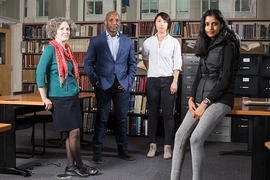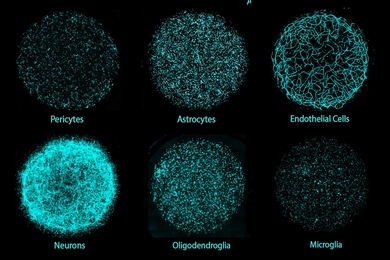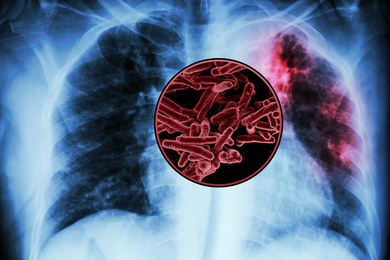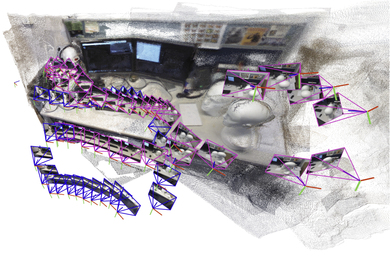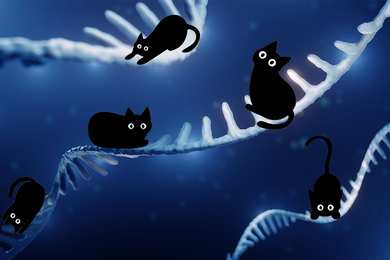Just over a century ago, the world grappled with a major pandemic when the H1N1 influenza virus infected about 500 million people in 1918 and 1919. When the virus first appeared, MIT had just relocated from Boston to its current campus in Cambridge, Massachusetts, and World War I was approaching its conclusion.
As the MIT community now grapples with Covid-19, the MIT Libraries' Nora Murphy has been exploring archival materials related to the 1918 flu pandemic, which similarly disrupted life at the Institute. Murphy, the archivist for researcher services in the MIT Libraries’ Distinctive Collections department, has worked with numerous MIT courses, encouraging active learning and critical analysis using the Institute’s collections. She co-teaches the MIT and Slavery class with Craig Steven Wilder, the Barton L. Weller Professor of History. Here, she shares some of what she found of life during the 1918-19 pandemic, and offers insights on documenting our current crisis for the future.
Q: What materials have you been able to find, what has stood out to you about that time at the Institute?
A: We did research on MIT’s response to the 1918 flu back in 2006, and, luckily, I have access to those notes. In 1918, the flu epidemic hit while MIT was in the midst of developing and offering training programs to prepare soldiers and officers to fight with U.S. Naval and Army forces in World War I. The Institute was balancing its normal academic program with more than seven of these war-related programs. To accommodate them, MIT was busy building temporary housing and research facilities — the buildings on the relatively new Cambridge campus were deemed insufficient for the task. Of course, that changed after the armistice was declared on Nov. 11, 1918.
According to the 1918 Report of the President and The Tech, there was a three-week delay in the start of the fall 1918 semester at the request of federal and state authorities “due to prevalence of Spanish Influenza and Grippe which has spread throughout this section of the country.” In an Oct. 2, 1918, announcement of the postponement, The Tech editors write, “It is our aim to aid in every way possible the fight against this terrible disease which now seems to have passed its crisis.”
Q: Do you see any parallels between the 1918 flu pandemic and the current Covid-19 crisis at MIT?
A: One parallel would be social distancing efforts. Contemporary newspaper accounts show that MIT complied with emergency governmental regulations of local municipalities and delayed the start of the semester in 1918, and the opening of a newly constructed mess hall on campus was delayed to prevent the congregation of large numbers of people in one space.
There is also a circular letter from President Richard Maclaurin to the students in the Dec. 21, 1918, issue of The Tech in which he refers to the “abnormal” conditions of the fall semester. While it’s not clear if he is referring to the effects of the flu epidemic or the wartime training programs, there did seem to be similar questions to those MIT is considering now of maintaining academic continuity during a major disruption. He writes that “[the faculty] will not adopt a policy that will involve a lowering of the Institute’s standards,” but acknowledges that the faculty would take the current conditions into account and notes some of the ways students could catch up to continue their normal academic progress.
Q: How do you, as an archivist, think about documenting this experience of the Covid-19 pandemic at MIT for the future?
A: Documenting our individual and collective experiences in these extraordinary times will help each of us and our successors to reflect on the decisions made in order to evaluate how we respond to a future “abnormal” event. It gives us the chance to acknowledge the strengths and weaknesses of our plans and the chance to share our experiences.
Currently, there are several efforts underway to document MIT’s experience with the Covid-19 pandemic, and more are likely to develop. MIT Distinctive Collections is web-archiving Institute websites and working to more broadly collect experiences across MIT. Community members are invited to submit all forms of personal reflections and firsthand accounts on our website. Debbie Douglas of the MIT Museum is leading an effort, in collaboration with members of the Class of 1970, leaders at the Institute, and Distinctive Collections, to document reflections of students in her History of MIT class, as well as those of alumni. In addition, Distinctive Collections is working with classes to find ways of incorporating documentary efforts into assignments.
We also strongly recommend that MIT academic and administrative offices record their pandemic-related responses and activities in their annual reports to the president. These reports are a wonderful resource for scholars.
The Institute Archives, which is part of Distinctive Collections, welcomes discussion of how and what to share with us, so that what the members of our MIT community are experiencing now — whether in labs on campus, at home, or wherever they have found a safe haven — is available for the future. Any questions can be sent to us at MITstory-covid19@mit.edu.




